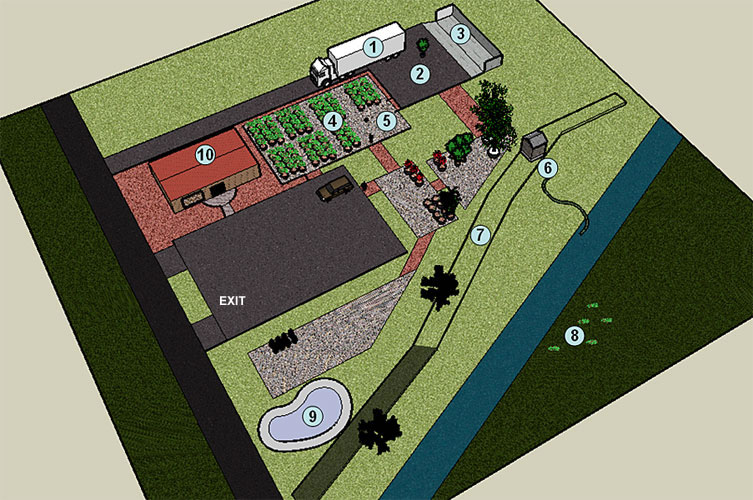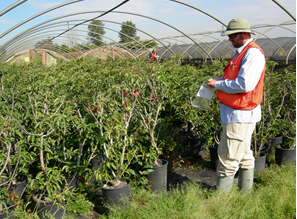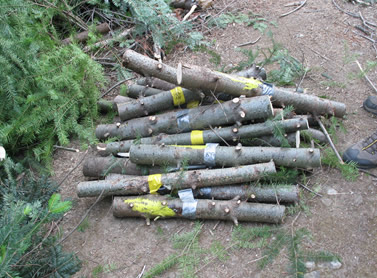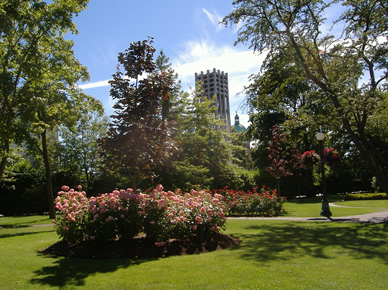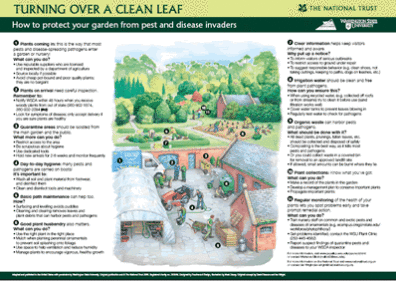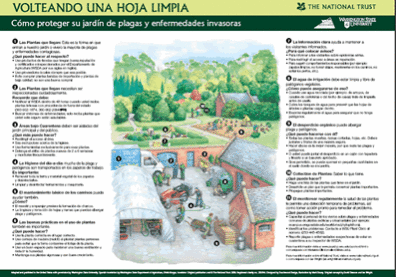Virtual Oomycyete Demonstration Nursery
gary.maguireWelcome to the Virtual Oomycete Demonstration Nursery
Oomycetes are a group of fungal-like organisms which include important native and exotic plant pathogenic species of Phytophthora and Pythium. These organisms resemble fungi in appearance and behavior but are more closely related to brown algae (e.g. sea kelp). Like brown algae, Oomycetes need water to thrive and disperse. Thus many effective management strategies for Oomycetes in effect restrict their access to water. Keep this in mind as you tour this nursery and see how many of the management practices are essentially moisture management strategies. A second important theme observed throughout this virtual nursery is sanitation.
There are several reasons why it is a good idea to manage against Phytophthora and Pythium species in your nursery. Many of these organisms cause leaf blights and root rots which devalue horticultural merchandise. Some of these organisms are exotic and have the potential to negatively impact our environment by killing and reducing the vigor of trees and other plants that have not evolved defenses against them. Also some of these plant pathogens, including Phytophthora ramorum are regulated by the federal government. If Phytophthora ramorum is detected in your nursery during department of agriculture nursery inspections; mitigation measures will cost your nursery over $12,000 on average in Washington State.
Enjoy your visit and think about how the strategies observed in the WSU Virtual Oomycete Demonstration Nursery could be adapted for your retail or wholesale nursery and even your personal home garden.
Start the tour by clicking on a numbered item on the map below…
